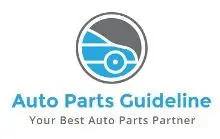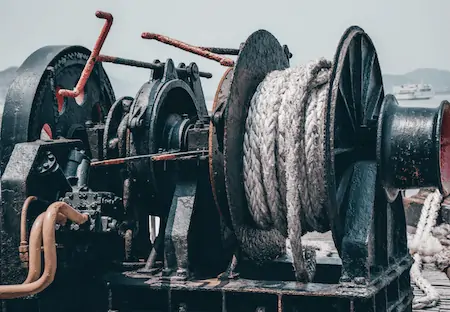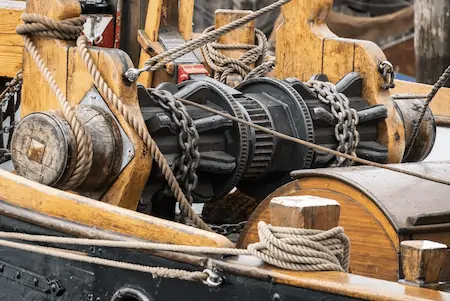Have you ever seen a car getting towed and wondered how that machine works?
Most of us have little to no idea about winches and the way it operates. But, if you own one and know how it works. It could benefit you to take proper care of your machine.
Furthermore, there isn’t just one type of winch out there. There are capstan, electrical, air hoists, and many other versions.
But in this write up we are going to talk about a particular type of pulling device — the hydraulic winch and how does a hydraulic winch work?
So, if you wish to enhance your knowledge of winches, keep on reading.
Contents
Features of Hydraulic Winch
A hydraulic winch is a heavy-duty mechanical device that runs using a hydraulic system.
These types of devices are suitable for far more heavy-duty jobs than traditional machines. This machine has much more components and power output capacity.
This unique hoist device comes with a lot of added features and benefits. Let’s take a lot at some of the characteristics that make it stand out from other devices.
Power
These machines are more powerful than standard winches and the perfect choice for ships. Since it works using the hydraulic system, it can transmit a more efficient force to carry massive loads.
By using fluid power, this machine uses less energy but exerts more influence. Moreover, engineers have equipped it well enough to perform even in a harsh environment in full force.
Battery
For some marine duties, the sea tide plays a massive role, for which you might have to keep the machine running for hours. Unlike electrical hoists, this device does not depend on batteries.
You do not need a generator or battery to operate these machines; instead, it runs on fluid pressure. So you can use this machine for an extended time without the fear of losing power.
Overheating
This heavy-duty device does not have any overheating issues. You can use them for extended work periods without a break. It is highly suitable for projects with time constraints and heavy loads.
Especially for ship launching and upgrading activities, this machine is generally the first choice. Hence, these machines offer efficiency in working.
Safety
These machines are not composed of electrical compartments. Hence, it reduces the risk of motor stalls and fire hazards. So, it offers better safety than other similar equipment.
Can Function Underwater
Another significant advantage of this equipment is it can function underwater. It does not have any electrical components.
So, the corrosion resistance capability makes them safe around rough seawater. Moreover, they work fine even if they are entirely submerged.
Installation
You may find the setup process of this device a bit complicated. In most cases, it requires extra parts, which may also increase the cost.
However, having spare parts serves as a benefit. You can easily replace old components with new ones.
So, instead of getting a whole new machine, you can save some money. But, it requires a bit of mechanical knowledge to install this hoisting device.
Operation
A standard hydraulic hoist consists of control panels, switches, pushbuttons, and joysticks. The operation is a bit complex and requires experience and knowledge.
However, there are some automated versions available that don’t need much manual regulation.
Durability
If you take proper care and maintain this machine correctly, it will likely last for a long time. From time to time, mechanical repairments are essential for proper maintenance.
Moreover, it has features like automatic breaks, a drum lock system, an over-travel prevention system, an emergency stop button.
All these features provide added protection, which ensures durability. Hence, if used correctly, this machine offers high durability.
Uses of Hydraulic Winch
These winches are an essential component of the marine industry. And these machines do not rely on batteries and work using the hydraulic system of a vehicle.
They are also safe for use in a cold climate and around water, making them the perfect marine industry machine.
Moreover, it is suitable for both on-shore and off-shore activities. Typically this machine is applicable for hoisting an anchor, vessel mooring, towing operations, and holding ship against the current.
Besides, it is also suitable for hauling and dragging heavy loads on the dock. However, choosing the right winch for your boat, ship, or vessel is crucial.
For that, you have to consider the size, space, and weight of the ship. Also, you need to consider the electrical system that will regulate the machine.
This machine is the best choice for vessels with large generator sets because the hydraulic system equipment demands large space and more power.
Ships that works on moving heavy cargo should include this device rather than other standard machines
How Hydraulic Winch Works?
A standard hydraulic hoist uses fluid, typically oil, as a working medium. It utilizes fluid power using a vehicle’s hydraulic system and a motor pump between the generator and the machine.
The power steering pump creates a pressure that transmits the power through the pressure inside the oil
Often, just a motor is not enough to perform a heavy job, so you can couple it with a gearbox. The gearbox connects the winch and the cables that carry the load.
Moreover, the whole system remains associated with a compressed valve with a central spool, pressure line, switches, and the pump supplying fluid.
Generally, this machine’s motor does not have any speed options. You cannot change the speed, so the gearbox allows you to use custom speeds for your job.
The structure of this device can vary, but most winches have some standard parts. Below, we have discussed how it works in sections as well.
Control Section
This part contains the flow control valves, pressure control valves, and directional control valves.
You can control and change the pressure and flow of the fluid. Also, you can change the flow of direction if you want.
Power Section
The power part transforms the mechanical energy of the fluid to hydraulic energy using the pump.
Execution Section
Different cylinders and motors make up this part. It transforms the pressure energy from the pump into mechanical energy, which gets the working mechanism running.
Auxiliary Section
In this section, all the other parts remain connected. This part serves as an oil storage section. It also carries out works like sealing, filtration and measurement.
Moreover, it consists of piping, fuel tanks, filters, seals, and accumulators.
Structure of a Hydraulic Winch
A basic hydraulic winch comes with a low or high-speed motor. Additionally, it has a closed multi-disc brake, a support shaft, a drum, and a planetary gearbox.
There is also a clutch, which is an optional component. The drum usually holds the brake and the planetary gearbox. The motor has large starting torque and can work with high mechanical efficiency.
According to the demand of the job, you can connect it to different distributors. Besides, you can also incorporate the valves into the oil distributor as per your requirement.
Engineers made the overall structure of the machine very reasonable and precise. Brilliant engineering allows high efficiency, stability, reliability, and proper safety in operation and performance.
Final Words
At last, we have reached the end of this winch knowledge marathon. Hopefully, we were able to answer what you were looking for.
And also, we hope you could use this knowledge of how does a hydraulic winch works in your practical life someday.
Undoubtedly, this newly found knowledge will help you to take good care of your precious machine.
However, if you are low on budget, we recommend checking the best cheap winch reviews.



![Read more about the article How Does A PTO Winch Work? [Power Take Off Winch 101]](https://autopartsguideline.com/wp-content/uploads/2022/02/how-does-a-PTO-winch-work-300x194.webp)
![Read more about the article Different Types Of Winches Explained In Details [Beginners Guide]](https://autopartsguideline.com/wp-content/uploads/2021/03/different-types-of-winches-300x198.webp)
